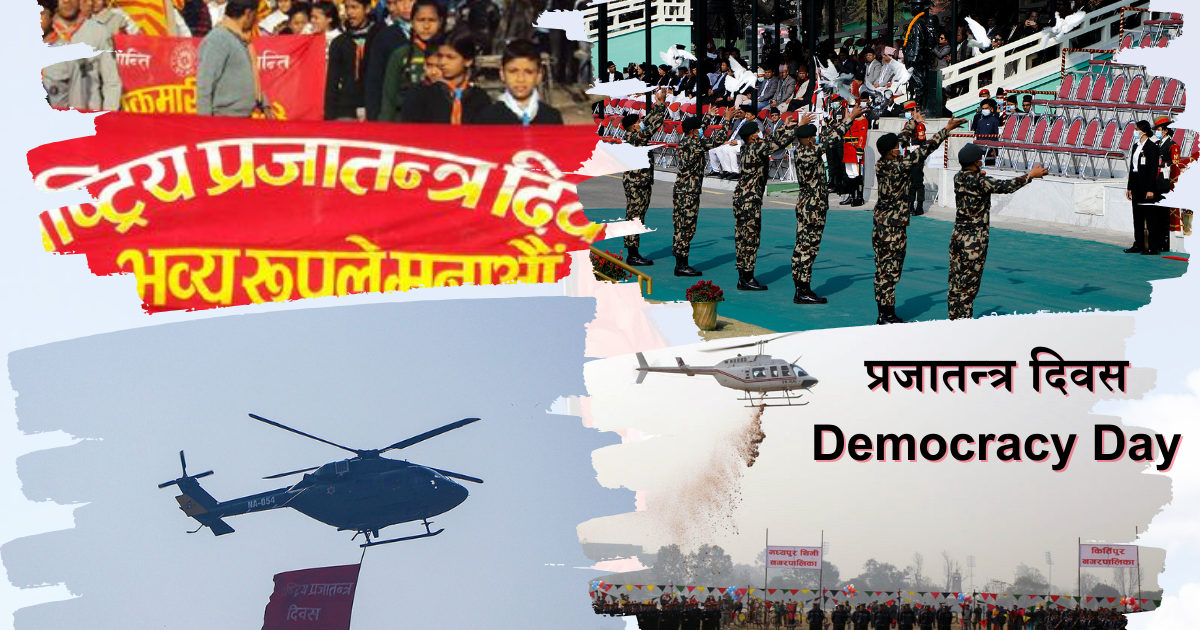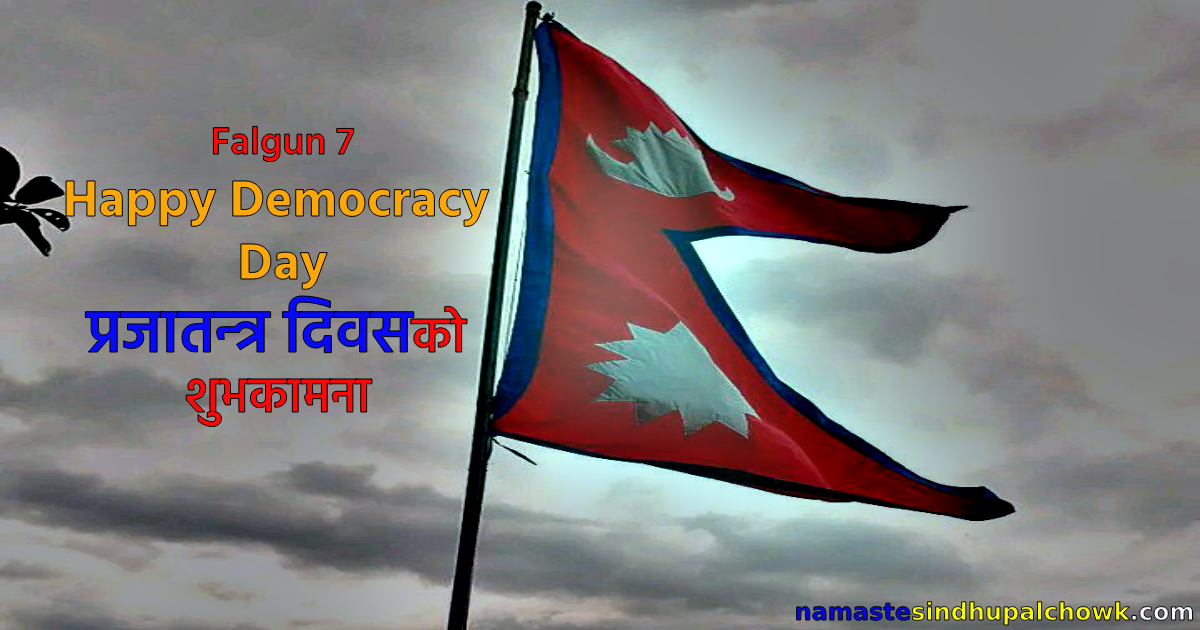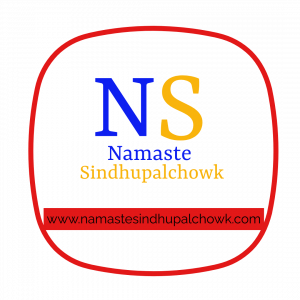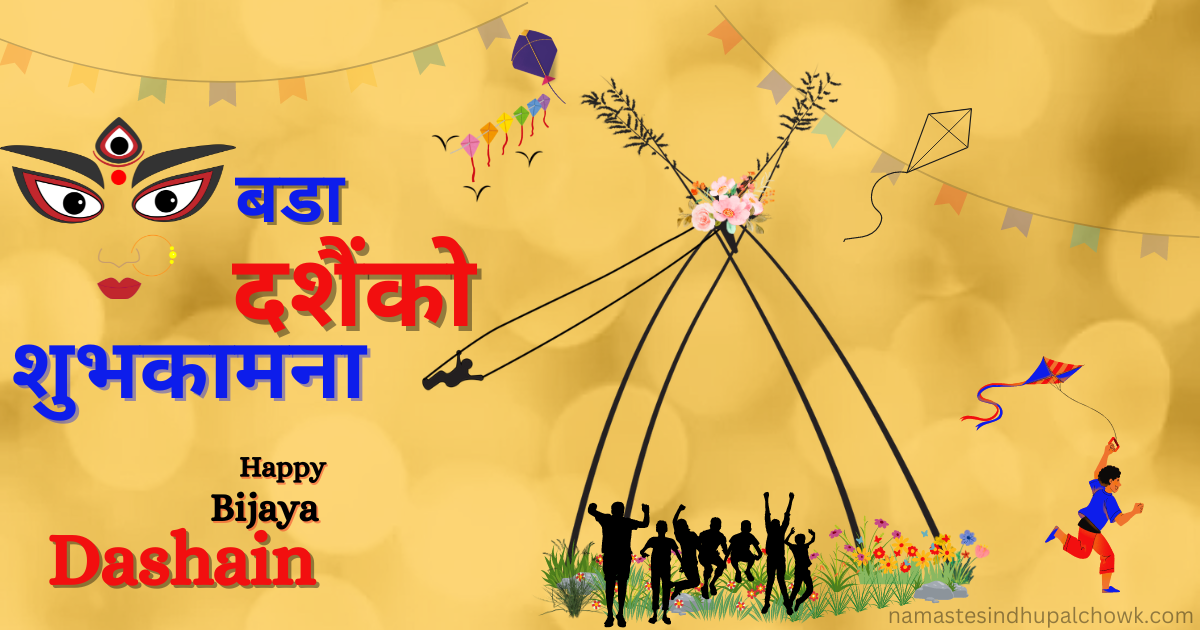National Democracy Day or Rastriya Prajatantra Diwas is celebrated in Nepal every year on the 7th of Falgun. The 104-year-old autocratic and cruel Rana regime passed away on 7th Falgun 2007 BS (February 18, 1951). So, Democracy Day is celebrated on this day every year in memory of that. The establishment of democracy is the first step in establishing a legal state in Nepal and giving people freedom and rights in the hands of citizens.
National Democracy Day was the success of the rebellion, the voice and steps of the people of Nepal against the autocratic regime. Democracy Day is a very appropriate and fruitful day in the history of long political struggles and freedom movements. Similarly, on this day, the nation of Nepal got a new political system.
Before the establishment of democracy in Nepal, the condition of education was critical. At that time, only the families of the Rana had the facility of education. A large proportion of the wealth earned by the people had to be handed over to the Rana. Inequality, discrimination, and illiteracy were the main problems of Nepalese people. The Ranas used to rule with the mentality of leading only their families towards prosperity.
Democracy was the first historical step to bring Nepal to prosperity on a political, economic and social basis by changing it according to the global environment. Therefore, this day is a day worth remembering in the history of Nepal. This day is a public holiday in Nepal. And, various programs are conducted at different levels.
Election Day is celebrated in Nepal on National Democracy Day.
How was democracy established in Nepal?
After the Kot Parba of 1903 BS in Nepal, the autocratic Rana rule began under the leadership of Jung Bahadur. After that, family members started moving into the power of Nepal. Which was such a regime that the common people were always exploited by the government. During the Rana period, the state did not provide even general services to the citizens. How critical was the situation of the Nepali people at that time? That is unthinkable even today.
Read Also: Republic Day in Nepal
During the Rana rule in Nepal, the world experienced two terrible world wars. With the end of the Second World War in 1945 AD, nations in the world began to become independent from colonialism. In the same way, public awareness about democracy and civil liberties spread very rapidly in the world. Its influence also reached Nepal.
In the midst of the Rana regime, many individuals started a movement against that regime. Worked to spread public awareness. However, all those persons were hanged by cruel Rana. At the same time, in 1997BS four warriors who started a fierce movement against the Rana regime were hanged by the Rana at different times. The four Gangalal, Dharmabhakta, Dasharatha, and Shukraraj are the four martyrs of Nepal. Lakhan Thapa, the first martyr of Nepal, also achieved heroism in the fight against the Rana regime.

The first political party of Nepal, the Nepal Praja Parishad (Nepali Congress), and the rebellion of the students and King Tribhuvan's exile to India are considered to be the main basis for the establishment of democracy (Prajatantra) in Nepal. Similarly, amid various political events, an agreement was reached between Nepali Congress (Praja Parishad), Raja (Tribhuvan) and Rana on 1st of Falgun, 2007 BS in the mediation of Jawalal Nehru, the immediate Prime Minister of India. King Tribhuvan returned to Nepal on Falgun 4. And, on the 7th of Falgun, he announced the establishment of democracy in Nepal.
The Hijacking of Democracy
A new democratic system came into force in Nepal on the 7th of Falgun, 2007. After that, the educational, economic and social sectors of Nepal gradually opened up. In Nepal, there was a system of government run by representatives elected by the people. A way was opened for individuals to reach the power of the country through elections by opening a political party. In the year 2007, with the agreement of all parties, the constitution was made as the Interim Government Act of Nepal.
After the establishment of democracy, general elections were held in Nepal in 2015 BS. Nepali Congress won the majority in that election. The Communist Party of Nepal also participated. After the election, a new government was formed under the leadership of BP Koirala of the Nepali Congress. At that time the king of Nepal was Mahendra Shah. Meanwhile on 1st Poush 2017 BS
King Mahendra imposed various charges on the political parties of Nepal and announced the ban and implemented the Panchayat system in Nepal. Thus, within a decade of its establishment, Nepal's democracy was hijacked.
Movement for the Restoration of Democracy
In the history of Nepal, there were two movements for democracy. First, in 2007 BS, there was a movement for democracy. And in 2046 BS there was a movement for the restoration of democracy. The first mass movement took place in Nepal in 2046 BS. And that movement was successful. With this success, the Panchayat system ended in Nepal. And the multi-party system started again. After that, constitutional monarchy and a multi-party system started in Nepal.
Meanwhile, many political events took place in Nepal. In 2058, Virendra's family was massacred. After that, Gyanendra Shah became the king of Nepal for the second time. He also took steps to concentrate all state power on himself. In opposition to that, Jan Andolan-2 was held again in Nepal. In that people's movement, seven political parties and the immediate Maoists who were in armed rebellion and civil leaders etc. actively participated.
This political movement succeeded in ending the monarchy in Nepal. And, the republican system was implemented in the country. The first Constituent Assembly elections were held in 2064 BS and the second in 2070 BS. After that, in the year 2072 BS, the constitution was made by the representatives elected by the people. This constitution developed Nepal as a country with a federal democratic republican system of governance.
The Beauty of Democracy
Democracy is considered to be the leading and progressive system of the world political system. It covers not only the political but also the social, economic, and other sectors of the country easily. Human rights, justice, prosperity, freedom, etc. are its main foundations.
In Nepal, during the Rana and Panchayat period, human rights and freedoms were unimaginable. At that time, the people did not have the practice of electing a leader. Nor was there any right to personal property. It was just a rule of law. Now we are in the era of the free political system, a social system with rights and the right to vote. All this is the gift of democracy.
America's great statesman and former President Abraham Lincoln said, "A democracy is a government by the people, for the people, to the people."
National Democracy in Nepal: Know the Facts, Information, History, Story & More
Democracy Day is a great achievement in Nepali history. Moreover, Rana's rule ended on this day which began in 1903 AD. The modern period of Nepal started after the establishment of democracy. Thus, This is the event that started Nepal in the journey of the modern world.
- National Democracy Day refers to " Prajatantra Diwas" in Nepal.
- Rana's rule started in Nepal in 1903 AD. Rana ruled over Nepal for 104 years. Finally, only after the establishment of democracy in the year 2007 BS, was the Rana regime removed from Nepal.
- Although democracy was established in 2007 BS, King Mahendra banned this system of government in 2017 BS.
- Nepal got a new democracy (Loktantra) after the 2062-63 movement.
Happy Democracy Day to all.







